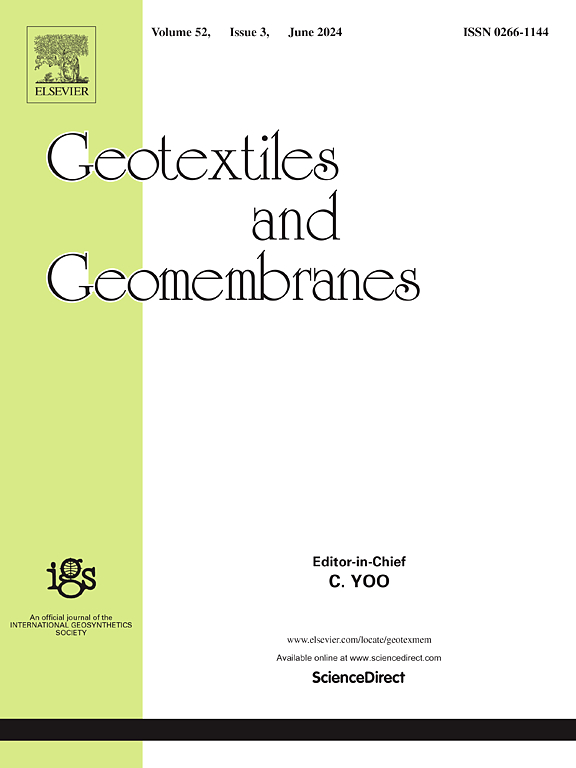缓解寒区水渠冻害:双层土工膜衬砌结构的性能评价
IF 6.2
1区 工程技术
Q1 ENGINEERING, GEOLOGICAL
引用次数: 0
摘要
为了解决干旱寒冷地区运河衬砌结构的冻害问题,本研究提出采用双层复合土工膜(tlcg)作为冻胀复合衬砌结构。为了评估双层土工膜衬砌结构(TLCGLS)的性能,进行了现场试验。考虑衬砌结构与渠道基础土的相互作用,基于基础土水-热-力耦合理论,建立了渠道冻胀计算模型。分析了冻胀条件下单层复合土工膜(SLCG)、无摩擦双层复合土工膜(FTLCGS)和TLCGs管道衬砌的应力。结果表明:TLCGLS可使运河地基土温度升高7%,含水率降低12%,有效缓解运河变形38%;运河衬砌下的tlcg垫层可以有效地解除切向冻结约束,使衬砌结构具有一定的柔韧性,从而防止冻损。因此,合理使用具有适当摩擦力的tlcg,并设置柔性结构缝,可以防止冻损。本文章由计算机程序翻译,如有差异,请以英文原文为准。
Mitigating frost damage in cold region canals: performance evaluation of a two-layer geomembrane lining structure
To address frost damage to canal lining structures in arid and cold regions, this study proposes the use of a two-layer composite geomembranes (TLCGs) as a frost-heaving composite lining structure. To assess the performance of the two-layer geomembrane lining structure (TLCGLS), field tests were conducted. Considering the interaction between TLCGs and lining structure and canal foundation soil, a calculation model of canal frost heave is established based on the water-heat-force coupling theory of foundation soil. The stress of canal lining with single-layer composite geomembrane (SLCG), frictionless two-layer composite geomembranes (FTLCGS), and TLCGs under frost-heaving conditions is analyzed. The results indicate that TLCGLS can enhance the temperature of canal foundation soil by 7 % and decrease the water content by 12 %, thereby effectively mitigating canal deformation by 38 %. The TLCGs cushion under the canal lining can effectively release the tangential freezing constraint, so that the lining structure has certain flexibility, so as to prevent frost damage. Therefore, the reasonable use of TLCGs with appropriate friction and the setting of flexible structural joints can prevent frost damage.
求助全文
通过发布文献求助,成功后即可免费获取论文全文。
去求助
来源期刊

Geotextiles and Geomembranes
地学-地球科学综合
CiteScore
9.50
自引率
21.20%
发文量
111
审稿时长
59 days
期刊介绍:
The range of products and their applications has expanded rapidly over the last decade with geotextiles and geomembranes being specified world wide. This rapid growth is paralleled by a virtual explosion of technology. Current reference books and even manufacturers' sponsored publications tend to date very quickly and the need for a vehicle to bring together and discuss the growing body of technology now available has become evident.
Geotextiles and Geomembranes fills this need and provides a forum for the dissemination of information amongst research workers, designers, users and manufacturers. By providing a growing fund of information the journal increases general awareness, prompts further research and assists in the establishment of international codes and regulations.
 求助内容:
求助内容: 应助结果提醒方式:
应助结果提醒方式:


